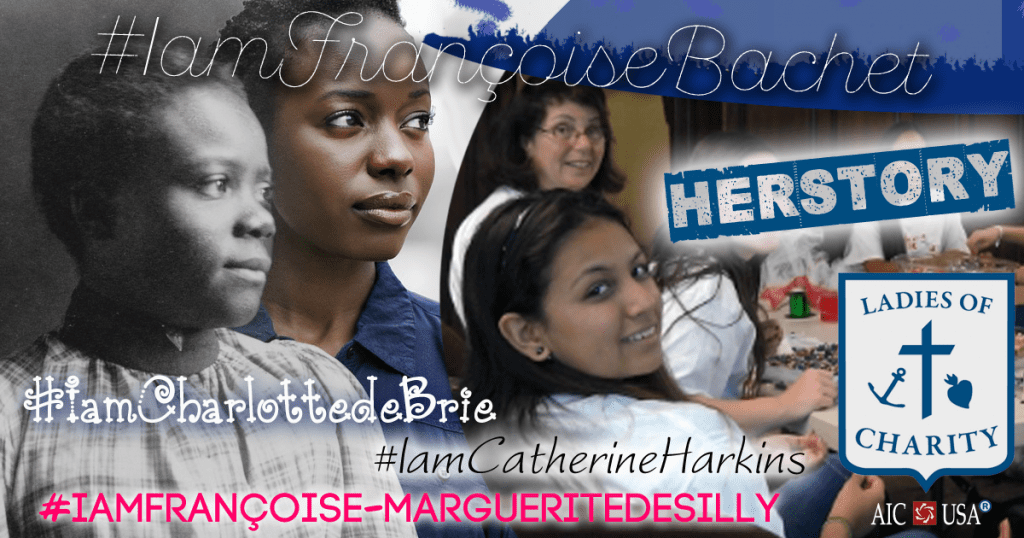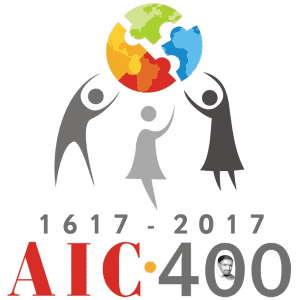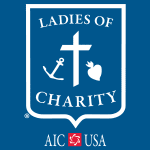
Herstory[1.Jane Mills, “Womanwords: a dictionary of words about women”, 1992, ISBN 0-02-921495-5, p. 118] : history (knowledge obtained by inquiry) written from a feminist perspective, emphasizing the role of women, or told from a woman’s point of view. Many have asserted and are asserting the necessity of this critical perspective. I’d like to invite you into a conversation within the Vincentian Family. Commenting on a recent article about “Unaffiliated Lay Vincentians” on famvin.org, Mary Ann Dantuono, President of the Ladies of Charity (AIC) USA, wrote,
As a leader in the Vincentian Family, I enjoyed reading Scott Kelly’s and Jessica Werner’s article and the discussion on ULVs at a recent VIN FAM Leaders meeting. As one of the three original foundations, the Ladies of Charity believe that the presence of ULVs present opportunities and challenges to the existing “institutional expressions of the Vincentian Mission.” The Confraternities of Charity were founded by St. Vincent in August of 1617. (Eight years prior to the founding of the Congregation of the Mission, 16 years prior to the foundation of the Daughters of Charity and 216 years prior the “new branch of lay men who first called themselves the Society of St. Vincent de Paul in 1833.”) The “rule” of the Confraternities required a simple commitment to spiritual practices and service to God by serving persons who are poor and frail with humility, simplicity and charity.
The Confraternities of Charity were formed by St. Vincent with lay women in leadership roles and played an important part in the founding and proliferation of St. Vincent’s varied ministries. The International Associations of Charities (AIC) or the Ladies of Charity of the United States of America as we are called today is a direct descendant of what Fr. Etienne affectionately called for the first time “Dames de la Charité” when he promoted their revival with the two other foundations of St. Vincent after the French Revolution.
The report stated that it is “striking to note that seventy-eight percent of respondents (ULV) were female” and that “a significantly higher proportion of Vincentian volunteers are women (78%) when compared to national averages for volunteer organizations (58%)”.
St. Vincent would not have been surprised at the “striking” number of women in the ULV survey. His genius affirmed not only the role of women in the Church but also appreciation of their excellent leadership skills as well as their giftedness in caring for persons in need. It is very hard for young Vincentian women to find their roots in the Vincentian story when the role of their ancestors and the sisterhood who contributed greatly to the “family” is left invisible as it is in this short overview of this article. We are all, Ladies, Priests and Daughters of the Mission, along with the Society of St. Vincent de Paul, and the various branches committed to transitioning the Mission into the next century and seek the grace these young leaders will communicate.
ULV women, we welcome you to shape the Vincentian mission for the future with the women who trace their roots to St Vincent as “woman working together against all forms of poverty.” We welcome your Vincentian “love, inventive unto infinity” as we work collaboratively with the Vincentian Family to alleviate poverty and its causes.
Her comments should spur a strong discussion as to how the Vincentian Family will work in our contemporary situation to examine just how much patriarchal and ecclesiastical structures still relegate laity – and especially women laity – to a secondary status in the planning and execution of the Vincentian mission. Structures such as “historical traditions,” social and financial inequities, educational and employment opportunities all need to be examined in the light of how they prejudice the effectiveness of the Vincentian mission worldwide. Dr. Dantuono noted that “the sisterhood who contributed greatly to the “family” is left invisible” in the article. Too true. Remedying this begins with recounting herstory and the present contribution of women in the Vincentian Family.
 But it does not end there. It continues with a critique of our own contemporary systems and choices that continue to cloak the contributions of Vincentian women in “invisibility” and perpetuate the sinful fact that “It is very hard for young Vincentian women to find their roots in the Vincentian story….” As we approach the 400th Anniversary of the foundation of the Confraternities of Charity (now the AIC/Ladies of Charity) and the 400th Anniversary of a reform movement in the Church (the Congregation of the Mission) instigated by Françoise-Marguerite de Silly (Madame de Gondi), what must we do? The breath of the spirit in Mme de Gondi’s heart fanned the flame in Vincent’s heart in Folleville. The flame in his heart kindled the raging fire of organized charity that was begun in a revolutionary collaboration with Françoise Bachet and other lay women in Chatillon. Vincent leads the way in his forthright manner of speaking:
But it does not end there. It continues with a critique of our own contemporary systems and choices that continue to cloak the contributions of Vincentian women in “invisibility” and perpetuate the sinful fact that “It is very hard for young Vincentian women to find their roots in the Vincentian story….” As we approach the 400th Anniversary of the foundation of the Confraternities of Charity (now the AIC/Ladies of Charity) and the 400th Anniversary of a reform movement in the Church (the Congregation of the Mission) instigated by Françoise-Marguerite de Silly (Madame de Gondi), what must we do? The breath of the spirit in Mme de Gondi’s heart fanned the flame in Vincent’s heart in Folleville. The flame in his heart kindled the raging fire of organized charity that was begun in a revolutionary collaboration with Françoise Bachet and other lay women in Chatillon. Vincent leads the way in his forthright manner of speaking:
“You are undertaking the work of the widows of the early church, which is to take care of the corporal needs of the poor and also of [their] spiritual ones.” (Coste XIII:784)
“Ladies, you may be assured that God has used persons of your sex to do the greatest things ever done in this world. What men have ever done what Judith did, what Esther did, what the Maid of Orléans did in this kingdom, what Saint Genevieve did in providing Paris with food during a famine?” (Correspondence Conferences, Documents[2. Correspondence, Conferences, Documents, Volume one edited by Sr. Jacqueline Kilar, D.C., subsequent volumes edited by Sr. John Marie Poole, translated by Sr. Helen Marie Law, D.C., Sr. John Marie Poole, D.C., Rev. James R. King, C.M., Rev. Francis Germovnik, C.M. from the 1920 edition of Pierre Coste, C.M., and annotated by Rev. John W. Carven, C.M., New York: New City Press, 1985.] Vol. XIIIb:426)
As that flame spread from rural France to metropolitan Paris, we see Vincent as a true collaborator and a revolutionary reformer. He invited women to not only care for the corporal needs of people but also their spiritual needs, previously to that time the prerogative of the clergy (and even today the preferred prerogative of many clergy), and he invited women to lead these efforts!
For eight hundred years or so, women have had no public role in the church; in the past there were some called Deaconesses, who were responsible for seating the women in the churches and teaching them the rubrics then in use. About the time of Charlemagne, however, by a discreet working of divine Providence, this practice came to an end; persons of your sex were deprived of any role and haven’t had any since then and now that same Providence is turning today to some of you to supply what was lacking to the sick poor of the Hôtel-Dieu. (Coste XIII:809/CCD XIIIb, p. 432.)
With maturing structures in place like the Vincentian Family Executive Committee and the Vincentian Family Office, and with our chosen emphasis on collaboration for systemic change, how ought our future emerge? How will herstory influence our history and our future? In charity and in hope, can we begin a conversation with “feedback as learning, collaboration as the most effective path to gleaning collective wisdom, and fearlessness based on trust[3. http://thefearlessheart.org/collaboration-willingness-and-leadership-now-and-in-the-future/]” as the sure foundation of our efforts?
#IamFrançoise-MargueritedeSilly #IamFrançoiseBachet #IamCharlottedeBrie #IamCatherineHarkins[4. for information on these and other important names, see: Padberg, Collette and Danielle Hannefin, D.C., Saint Vincent’s First Foundation: The Ladies of Charity, http://via.library.depaul.edu/cgi/viewcontent.cgi?article=1011&context=vhj] #IamVincent
 Learn more about this issue, the Ladies of Charity, and who they are and what they do by viewing and reading these .famvin resources.
Learn more about this issue, the Ladies of Charity, and who they are and what they do by viewing and reading these .famvin resources.
Vinformation: August 22, 1617: First Confraternity of Charity
Vinformation: AIC: The Journey, 1617 to Today, Parts 1 & 2
“The dream” and the Ladies of Charity
Vincent de Paul and women in ministry
Systemic Change role model honored by Ladies of Charity
Reflections on the AIC Charter







Thank you Aidan, count me in for this conversation. It is important for understanding our history and our future.